This was published 6 years ago
The truth about the Airbus A380: Things you didn't know about world's first 'superjumbo'
By Steve Meacham
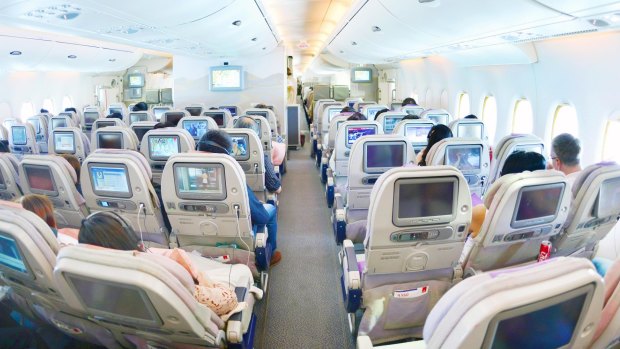
Economy class in an Emirates Airbus A380.Credit: Shutterstock
When it flew to Australia on its world-first commercial flight – 10 years ago this October – the Airbus A380 was billed as "the largest, quietest, greenest, most fuel-efficient per passenger" aircraft that had ever flown. It was capable of taking more passengers than any commercial plane before it (though licensed to take 843, commercial airlines usually settle for between 370 and 500). It could take off with the largest payload (passengers and luggage) of 63 tonnes and fly a longer distance (15,200 kilometres), with more technological back-up than any of its "Big Bird" rivals.
See also: Dubai dumped as Qantas' London stopover
If the unlikely concept of the "flying elephant" began with Disney's Dumbo movie in 1941, and continued with the first "Jumbo" – Boeing's 747, which went into service in 1970 – the A380 was the world's first "Super Jumbo". It is so large (73 metres long) and with such a huge wingspan (80 metres from tip to tip), the biggest hub international airports across the world needed to be reconfigured just to cope. (Sydney Airport, for example, spent $100 million preparing for the biggest of birds.)
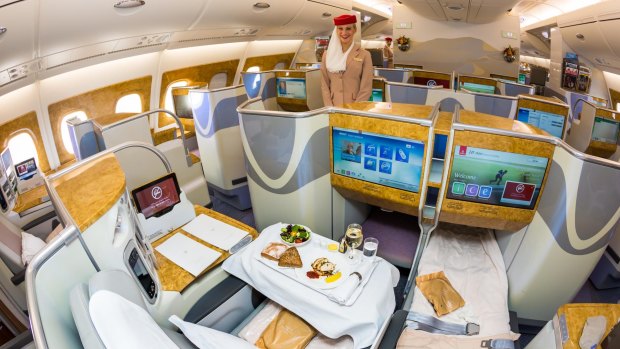
Emirates Airbus A380 business class.
Australia has long been part of flight aviation history, from Lawrence Hargrave's flight in his box kite in 1894 to the epic journeys of Sir Charles "Smithy" Kingsford-Smith, Nancy-Bird Walton and astronaut Andy Thomas. Yet as the "giant white underbelly" of that equally historic double-decker Singapore Airlines flight circled over Sydney on October 24, 2007, the on-ground Sydney Morning Herald reporter noted that when SQ380 touched down – with the "first-ever double-bed suite", the "world's largest business seat" and "a few extra centimetres of knee room" for economy passengers – it would mark "the biggest milestone in civil aviation in nearly four decades".
Sure, the A380 was two years late. But plenty of airlines had placed orders. Singapore was first to fly it, but 14 other elite airlines were in the queue for 169 A380s. Qantas, with 20 on order, was the second most enthusiastic customer after Emirates (55), followed by Malaysia Airlines, Thai Airways and Etihad.
See also: Qantas to fly non-stop to London and New York from Melbourne and Sydney
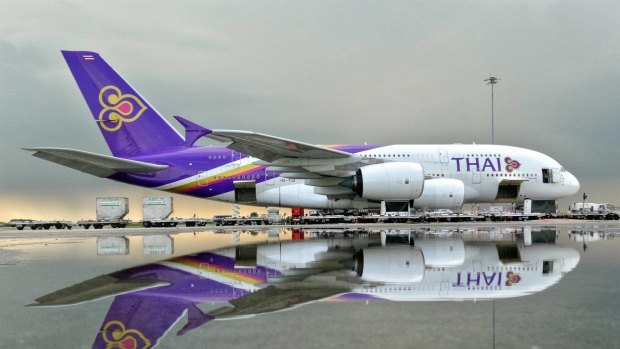
Thai Airways Airbus A380 at Suvanabhumi Airport after heavy rain.Credit: Shutterstock
Naturally everyone expected Boeing – the Seattle-based American giant – to fight back against its European competitor. So it did, with the 787 Dreamliner, which (after its own three-year delay) took its first commercial flight from Tokyo to Hong Kong in October 2011.
Though a wide-bodied, long-haul, twin-engined jet with many of the A380's technical advances, the Dreamliner is not even a Jumbo since it "only" carries between 242 and 335 passengers, depending on the airline seat configuration. However, its long range, mid-size and fuel efficiency makes it extremely adaptable.
See also: World's biggest passenger plane just got even bigger
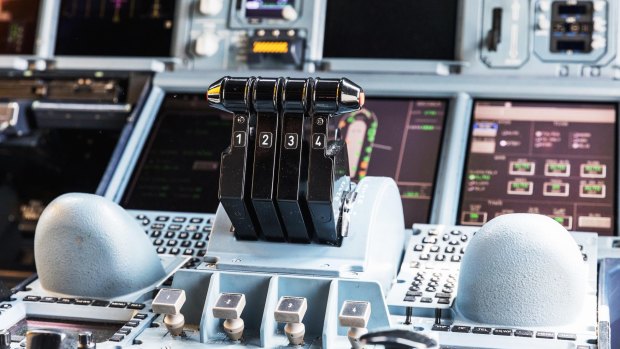
The dashboard and centre console of the Airbus A380-800. Credit: Shuttertsock
So, a decade later, how has the Airbus A380 fared? How has it matched up to passenger expectations? As of 2017, 13 airlines have a total of 214 A380s in service. Not one of those is American. By far the biggest A380 customer is Emirates, which has 96 in service and another 46 on order. "We are scheduled to receive our 100th A380 later this year," says Barry Brown, Emirates divisional vice-president for Australasia. "The A380 makes up more than a third of our fleet."
Singapore Airlines has 18 A380s in service, with another five "on firm order". Qantas, meanwhile, has 12 A380s, operating on flights from Melbourne and Sydney to Dubai, and on to London, as well as flights from Melbourne and Sydney to Los Angeles and from Sydney to Dallas, with seasonal services into Asia.
That initial Qantas A380 – Nancy-Bird Walton – took off from Melbourne to LA in October 2008, yet Qantas has no more A380s on order. Instead, the first of its eight Boeing 787-9 Dreamliners is due to begin service on the Melbourne to LA route in December.
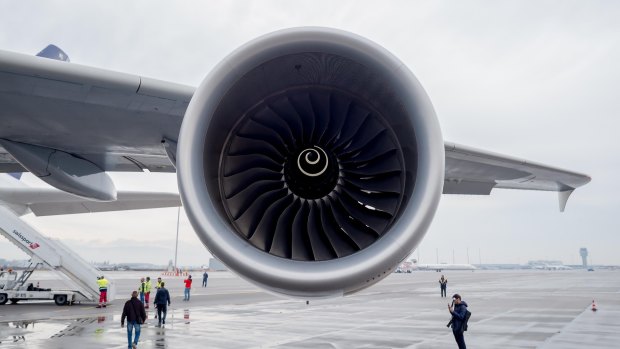
The enormous Airbus A380 aircraft wing and Rolls-Royce turbine jet engine. Credit: Shutterstock
Boeing says a total of 578 Dreamliners are now in service, with another 700 on order. All Nippon Airways (60), Japan Airways (34) and Qatar (30) have the most in flight.
What, if anything, went wrong with Airbus's bid for ascendancy over Boeing? In terms of engineering excellence, it remains a marvel (as was the world's only commercial supersonic aircraft, the late-lamented Concorde). Who knew its wing tips were based on the wing feathers of a steppe eagle, giving it extra lift in a tight circle upwards? Or that its 3000 square metres of fuselage is a glass reinforced aluminium laminate which can survive constant batterings from a high velocity, high altitude chicken gun?
Ultimately, though, most passengers only care about two things about a plane. How safe it is and how comfortable it is.
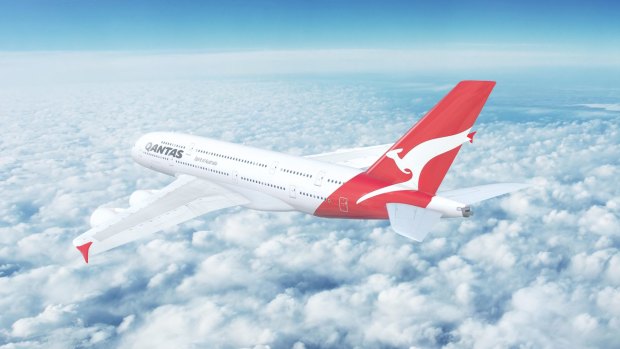
Qantas has refused to release information on its price costing for its northwest flights. Credit: Shutterstock
No A380, according to AirSafe.com, has, God willing at the time of writing, has ever crashed or been involved in a stowaway, hijack or sabotage incident. Nor has anyone ever died in suspicious circumstances aboard an A380. Famously, however, Qantas Flight 32 was forced to make an emergency landing at Changi Airport on November 4, 2010, after an uncontained engine failure. Captain Richard Champion de Crespigny became a Member of the Order of Australia for landing the plane without a single injury.
So is the A380 as pleasurable an experience as we were promised? And if it is such a technological marvel, why has it struggled to sell in the volumes Airbus predicted?
Clearly the Global Financial Crisis (which coincided with the A380's roll-out) did not help sales. But some airlines felt the essential concept was flawed. Super Jumbos rely on transporting large numbers of passengers between major hub airports like Changi, Dubai or London.
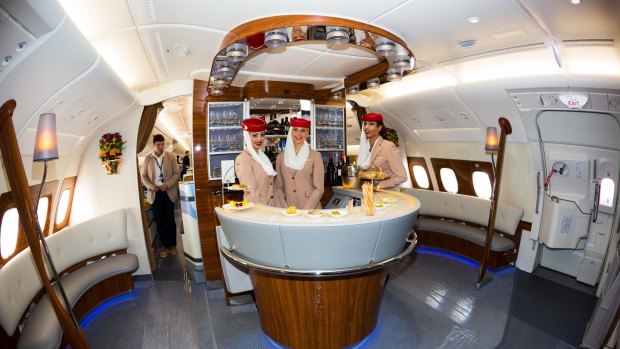
Emirates Airbus A380 onboard lounge. Credit: Shutterstock
All very well, if the hub airport is in the city you want to be in. If not, you'll have to transfer to a smaller plane anyway. Increasingly, passengers prefer to fly directly to their destination – which usually involves smaller aircraft.
See also: Singapore's secondhand superjumbos set for the scrapheap
One of the great environmental claims for the A380 is that its ability to carry so many passengers reduces the number of flights by less-fuel-efficient aircraft (also reducing take-off and landing congestion, and easing the noise burden for people living in the flight path). Yet passengers – particularly in less price-sensitive categories such Business and First Class – tend to want a spread of departure times to suit their needs.
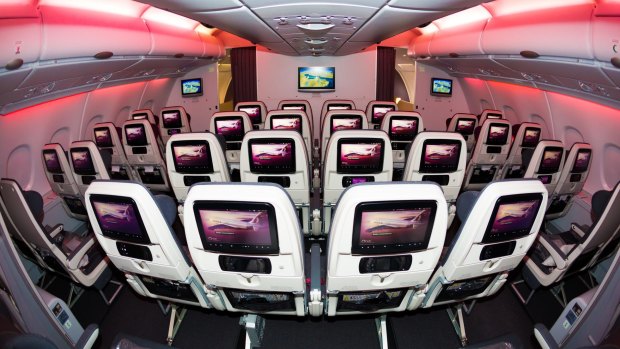
Qatar Airways Airbus A380 economy class seats. Credit: Shutterstock
Still, those who have flown on the A380 are overwhelmingly in favour of the aircraft.
Emirates' Brown points out that not only does an Emirates A380 fly the second longest route in the world (from Dubai to Dallas, 12,933 kilometres), but also the shortest A380 flight (from Dubai to Doha, 379 kilometres, currently suspended for political reasons).
Economy passengers on an Emirates A380 enjoy the 13.3-inch screen (the largest in the industry for Economy) with its 2500 entertainment channels, says Brown. Meanwhile First Class passengers can unwind in a private suite, before freshening up in the shower/spa.
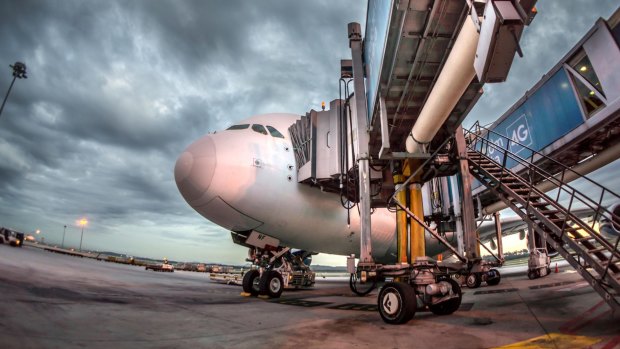
An Emirates Airbus A380. Credit: Shutterstock
As for Singapore Airlines – the airline celebrating the 10th anniversary along with the A380 – what has changed since 2007?
"We pioneered suites and there are 12 on each A380," a Singapore airlines spokesman says. "However, we added Premium Economy in 2015. The 36-seat cabin is located between Suites and Economy Class, on the lower deck." The airline is planning on a major revamp in the next few months.
See also: Why this is the world's best airline for 2017
THE VIEW FROM THECOCKPIT
Gordon Phillips retired in 2013 after 46 years as one of Qantas's most senior pilots. Most of his career was spent flying Boeing aircraft (707s, 747s, 747-400s and 767s), but for the last three years of his career he flew the Airbus A380.
WHICH IS THE BETTER AIRCRAFT TO FLY?
"I felt more in control of a Boeing. It was more satisfying as a pilot, more hands-on. The A380 is more technologically advanced, far more spacious and quiet than the 747. I'd prefer to fly the 747-400, but I'd prefer to be working on the A380."
DOES THE A380 HAVE BETTER FUEL EFFICIENCY?
"The jury is out on that. My experience leads me to believe you need a pretty full flight to make the A380 pay."
WHAT ARE THE TECHNICAL ADVANTAGES OF THE A380?
"Even with a full load – for example taking off from LA to Sydney – it can generally use the shorter runway, which saves a lot of time and fuel taxiing to the longer runway. It's also quiet and peaceful inside the cabin at all times, including takeoff and landing."
WHAT IS THE MAIN ADVANTAGE FOR PASSENGERS?
"It is certainly popular among passengers who find it quieter and more spacious."
THE VIEW FROM THE CABIN
Jeremy Burns worked as a Qantas cabin crew member on A380s for four years, after several years working on Boeing 747s. He left Qantas in 2016.
DOES IT TAKE LONGER TO DELIVER THE MEAL SERVICE?
"No, it's about the same as other aircraft. There's more crew in each cabin. There might be an extra cart or two in economy."
DOES IT TAKE LONGER TO BOARD OR DISEMBARK AN A380?
"Because each of the two decks has its own doors, it's comparable with a 747."
WHAT DID YOU LIKE BEST ABOUT THE A380?
"The air quality. Cabin air is recycled every two minutes. After a crew rest on a 747, I'd often wake up with nightmares."
WHAT IS THE MAIN ADVANTAGE FOR PASSENGERS?
"The quietness. The A380 is significantly quieter in all cabins."
WHICH AIRLINES OPERATE A380s?
Singapore Airlines (October 2007)
Emirates (August 2008)
Qantas (October 2008)
Air France (November 2009).
Lufthansa (June 2010)
Korean Air (June 2011).
China Southern Airlines (October 2011).
Malaysia Airlines (July 2012).
Thai Airways (October 2012)
British Airways (August 2013)
Asiana Airlines (June 2014)
Qatar Airways (October 2014).
Etihad Airways (December 2014).
Source: Airbus.
THE A380 IN NUMBERS
Range 15,200 kms.
Maximum passengers allowed 853
Typical seating 544
Maximum payload 63.40 tonnes
Wing span 79.75 metres
Overall length 72.72 metres
Height 24.09 metres
Cabin length 49.90 metres
Maximum cabin width 6.5 metres (main deck), 5.8 metres (upper deck).
Engines Airline choice of 4 x Rolls-Royce Trent 900, or 4 x Engine Alliance GP 7200.
Source: Airbus
A380: QUICK FACTS
How many family cars could park on each wing of an A380? 70
An A380 lands or takes off every how many minutes? Two
The air temperature in an A380 can be selected between which range? 18-30 degrees Centigrade
The quickest turnaround between two full A380 flights is how long? 90 minutes
During take-off, how many metres is an A380 wing designed to flex? Over four
Source: Airbus
Sign up for the Traveller newsletter
The latest travel news, tips and inspiration delivered to your inbox. Sign up now.